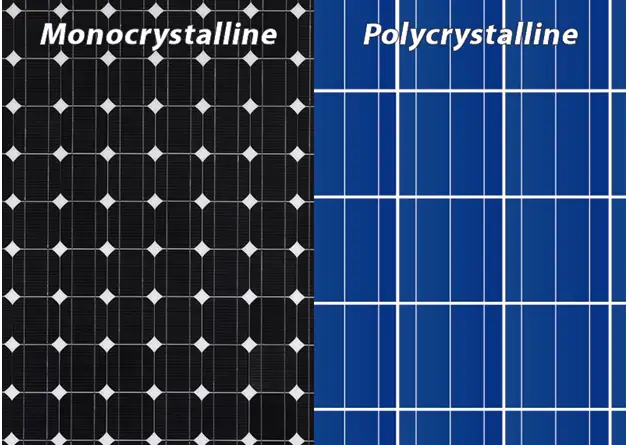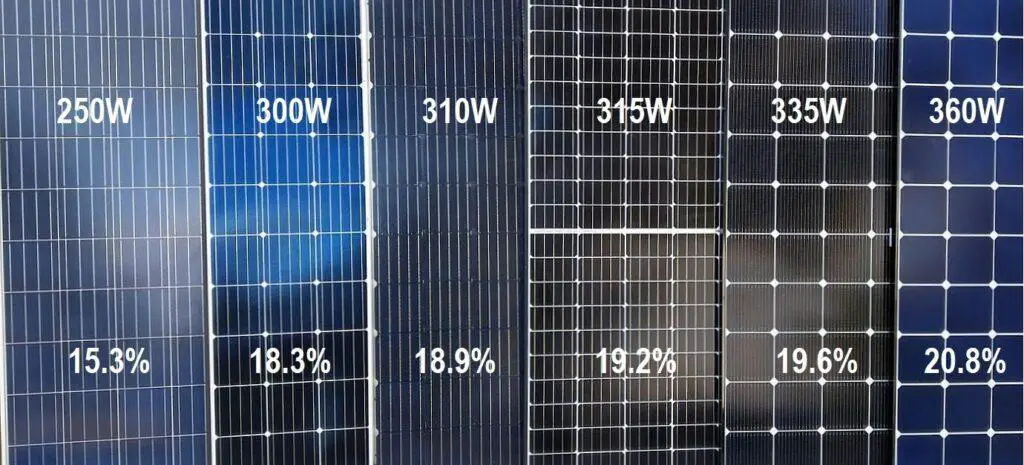Contents
- 1 Introduction
- 2 The Basics of Solar Panel Efficiency
- 3 The Essence of Solar Efficiency
- 4 Solar Panel Efficiency Calculator
- 4.1 Monocrystalline vs. Polycrystalline: A Core Distinction
- 4.2 Thin-Film Technology: A Different Approach
- 4.3 Efficiency and Real-world Application
- 4.4 Maximizing Efficiency: Innovations and Advancements
- 4.5 The Bigger Picture: System Efficiency
- 4.6 Making an Informed Choice
- 4.7 The Path Ahead: Efficiency and Sustainability
- 5 Factors Affecting Solar Efficiency
- 6 Real-World Examples of Solar Efficiency Differences
- 7 Conclusion
Introduction
Solar panel efficiency and solar panel efficiency calculator solar energy is one of the most promising and rapidly growing renewable energy sources worldwide. As we strive to transition to a more sustainable future. Solar power plays a pivotal role in reducing our dependence on fossil fuels and mitigating the impact of climate change. However, not all solar panels are created equal. And understanding the differences in solar efficiency is crucial in optimizing the benefits of solar energy. In this article, we will explore the factors that influence differences and solar panel efficiency calculators. And how it impacts the overall performance of solar systems.
The Basics of Solar Panel Efficiency
Solar efficiency refers to the ability of solar panels to convert sunlight into usable electricity. It is typically expressed as a percentage, representing the amount of sunlight converted into electricity. And relative to the total amount of sunlight that falls on the solar panel. Higher efficiency means more electricity can be generated from the same amount of sunlight.
In the pursuit of a sustainable energy future, solar power has emerged as a beacon of hope, offering a clean and renewable source of energy that can potentially revolutionize the global energy landscape. One key factor that sets solar panels apart is their efficiency a measure of how effectively they convert sunlight into electricity. As solar technology evolves, the solar panel efficiency calculator, understanding the nuances of solar efficiency differences becomes essential in harnessing the full potential of this transformative energy source.
The Essence of Solar Efficiency
Solar efficiency refers to the ratio of usable electrical energy output to the amount of sunlight received by the solar panel. This metric is a critical determinant of the performance and viability of a solar panel system. A higher efficiency rating indicates that a solar panel can convert a larger percentage of sunlight into electricity, making it more productive and cost-effective over the long term.
Solar Panel Efficiency Calculator
A solar panel efficiency calculator is a valuable tool that helps individuals and businesses assess the performance of their solar energy systems. This tool takes into account various factors such as the geographical location, the angle and orientation of the solar panel efficiency calculator, and the specific type of solar panel efficiency calculator being used. By inputting this information, users can obtain an estimate of the efficiency and energy output of their solar panels.
This information is crucial for making informed decisions about system design, maximizing energy production, and assessing the return on investment for solar installations. Solar panel efficiency calculators empower users to optimize their renewable energy solutions, reduce their carbon footprint, and harness the full potential of the sun’s energy. The equation below can be used as a solar panel efficiency calculator to calculate the approximate efficiency of a solar panel, as a percentage:


Monocrystalline vs. Polycrystalline: A Core Distinction
Two predominant types of solar panels dominate the market: monocrystalline and polycrystalline. The key difference lies in the composition of the silicon material used in their construction. Monocrystalline panels are made from single-crystal silicon wafers, resulting in higher efficiency due to their uniform structure. Polycrystalline panels, on the other hand, are crafted from multiple silicon fragments, leading to slightly lower efficiency levels.
While monocrystalline panels generally exhibit higher efficiency, the gap has narrowed as polycrystalline technology has advanced. Modern polycrystalline panels now offer competitive efficiency levels, making them an attractive option for budget-conscious consumers.
Thin-Film Technology: A Different Approach
Apart from monocrystalline and polycrystalline panels, thin-film solar technology offers another alternative. Thin-film panels are characterized by their flexibility and lightweightness, making them suitable for unconventional installation surfaces and even portable applications. However, thin-film panels typically have lower efficiency compared to crystalline silicon panels, making them better suited for installations where space is not a constraint.
Efficiency and Real-world Application
While solar panel efficiency is a crucial factor, it’s important to consider real-world application scenarios. Factors such as geographic location, orientation, shading, and temperature play significant roles in a panel’s actual performance. For instance, a highly efficient panel installed in a shaded area may yield lower energy output than a moderately efficient panel in an optimal sunlight-exposed location.
Maximizing Efficiency: Innovations and Advancements
Solar technology is a dynamic field, and continuous innovation is driving advancements in efficiency. From improving the quality of silicon materials to developing bifacial panels that capture sunlight from both sides, the industry is pushing the boundaries to squeeze out every ounce of energy from the sun’s rays.
The Bigger Picture: System Efficiency
It’s important to note that a solar panel’s efficiency is just one part of the larger equation. The overall efficiency of a solar energy system also depends on the performance of other components, such as inverters and wiring, as well as the system’s design and integration.
Making an Informed Choice
When considering solar panels, it’s crucial to strike a balance between efficiency, cost, and practicality. High-efficiency panels may come at a higher initial cost, while slightly lower-efficiency panels could offer better affordability without compromising significantly on output. Evaluating your energy needs, available space, and budget will help guide your decision.
The Path Ahead: Efficiency and Sustainability
As the world transitions to cleaner energy sources, solar efficiency will continue to be a driving force. Advances in technology will likely result in even higher efficiency levels, making solar power an even more attractive option. Embracing solar technology not only contributes to reduced carbon emissions but also offers a way to hedge against rising energy costs and foster energy independence.
In the realm of renewable energy, solar efficiency differences are a crucial piece of the puzzle. By understanding the nuances and evaluating your unique circumstances, you can make an informed decision that aligns with your energy goals and contributes to a brighter, greener future for generations to come.
Factors Affecting Solar Efficiency
- Solar Cell Technology: Different types of solar cell technologies are available in the market. Such as monocrystalline, polycrystalline, thin-film, and multi-junction cells. Each technology has its unique advantages and disadvantages, leading to variations in efficiency levels. For instance, monocrystalline cells tend to have higher efficiency but are costlier to produce compared to polycrystalline cells.
- Material Quality: The quality of materials used in manufacturing solar panels significantly influences efficiency. Higher-grade materials often lead to better light absorption and less energy loss during conversion, resulting in improved overall efficiency.
- Temperature: Solar panels work less efficiently at high temperatures. As the temperature rises, the output voltage decreases, leading to a drop in efficiency. This is why solar panel installations in hotter regions might experience slightly lower efficiency levels.
- Shading and Obstructions: Shading from nearby buildings, and trees. And other objects can reduce the amount of sunlight reaching the solar panels. Even partial shading can significantly impact efficiency by creating “hotspots” on the panels, where energy is lost as heat.
- Tilt and Orientation: The angle and orientation of solar panels affect their efficiency. Proper alignment towards the sun’s path maximizes sunlight exposure and consequently improves overall efficiency.
Real-World Examples of Solar Efficiency Differences
To illustrate the significance of it, let’s consider two hypothetical panel installations with different efficiency levels. Installation A uses high-efficiency monocrystalline panels with an efficiency of 20%. While Installation B uses polycrystalline panels with an efficiency of 15%.
Assuming both installations receive the same amount of sunlight over a year. Installation A will generate 33% more electricity compared to Installation B. This means that the higher efficiency of Installation A would result in greater energy savings. And a shorter payback period on the initial investment.

Conclusion
Solar energy presents an incredible opportunity for a sustainable future. However, understanding the (differences) between solar panel efficiency, and solar panel efficiency calculators is essential for maximizing its potential. Factors like solar cell technology, material quality, temperature, and shading. Tilt all play a crucial role in determining the overall efficiency of solar panels. By investing in higher-efficiency solar panels and optimizing their installation. We can harness the power of the sun more effectively and accelerate the transition to clean and renewable energy sources.
